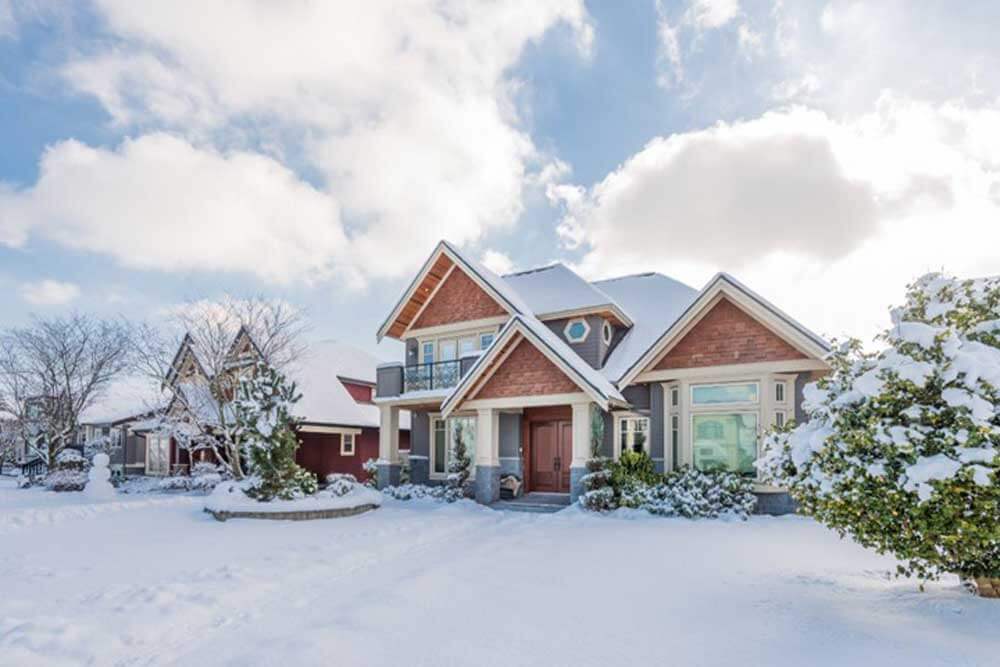
As winter’s chill sets in, many homeowners face the annual challenge of keeping their homes cozy without sending utility bills skyrocketing. The good news is that there are smart, energy-efficient ways to make your home feel warmer without cranking up the heat. So, if you’ve been wondering how to save on utilities in the colder months while maintaining a comfortable home, you’ve come to the right place.
Optimizing Heating Systems
It’s important to ensure your heating systems operate efficiently to keep your home warm without sending your energy bills through the roof.
- Conduct a home energy audit: This process involves identifying sources of heat loss, such as drafty windows or poorly insulated walls, and assessing the efficiency of your heating systems. You might be surprised to find that a significant amount of heat could be going to waste..
- Regular HVAC maintenance: This upkeep includes changing air filters and cleaning vents, which can significantly improve your system’s efficiency. Additionally, ensure your thermostat is properly functioning. A faulty thermostat can lead to unnecessary heating, wasting energy and money.
Utilize Natural Sunlight
Want to know how to make a room warmer? Utilizing natural sunlight can make heating bedrooms and other areas simple and energy-efficient.
- Opening curtains: By simply opening your curtains during daylight hours, you can maximize the use of this free and abundant heat source. Focus particularly on south-facing windows, where sunlight is strongest and can fill your rooms with natural light.
- Installing thermal curtains: These curtains have special thermal insulation properties that trap heat inside your rooms. When choosing curtains, look for ones with a high thermal insulation rating. Remember to close these curtains at night to retain as much heat as possible.
Draft-Proofing and Insulation
If you want to know how to keep a poorly insulated house warm, sealing drafts and adding insulation to your home is key.
- Identifying and sealing drafts: Weatherstripping for doors and windows is an effective solution, as cold air can often leak in these areas. Also, consider using draft stoppers, which are placed under doors to prevent cold air from seeping through.
- Adding extra insulation: Attics and crawl spaces are two areas that often require additional insulation, especially if you have a fixer-upper house. You can use rugs and carpets for floor insulation, as they trap heat and create a warmer surface underfoot.
DIY Heating Solutions
Crafting DIY heating solutions is a fun, effective way to keep your house warm in winter.
- Creating DIY draft excluders: You can make homemade draft blockers for doors using simple materials like old fabric and insulating stuffing. These can be placed at the bottom of doors to prevent drafts. If you need a quick temporary solution, rolled-up towels can offer a similar effect.
- DIY insulated window coverings: You can use bubble wrap to make insulated window panels, adding an extra layer of protection against the cold. This budget-friendly solution can significantly reduce heat loss through windows.
Cozy, Efficient Furnishings
With cozy and efficient furnishings, you can create a warm, inviting space without turning up the heat too much.
- Layering with warm textiles: Adding throw blankets and cushions to your living spaces enhances your home’s aesthetics and provides an extra layer of warmth to furnishings. Thermal curtains can be found in a variety of colors and styles, and can also add significant insulation to your home.
- Utilizing area rugs for cold floors: Placing rugs on tile or hardwood floors not only adds a cozy feel but also provides a layer of insulation, preventing heat from escaping through the floor. When choosing rugs, look for thick and cozy materials to keep your feet warm and your floors insulated.
Smart Thermostats and Zoning
With the help of smart thermostats and zoning, you can achieve a warmer house in winter without cranking up the heat.
- Investing in smart thermostats: Programmable thermostats allow you to set optimal temperatures for different times of the day, reducing energy usage when you’re not at home or asleep. This can help you save on heating costs while maintaining a warm and comfortable house.
- Implementing zoning systems: This strategy involves dividing your home into heating zones, allowing for targeted temperature control based on room usage. For example, you can lower the temperature in rarely used rooms and focus on heating the areas where you spend most of your time. This way, you’re not wasting energy heating unoccupied spaces.
Efficient Use of Fireplaces
These strategies can help you efficiently use your fireplace to warm up your home instead of overusing your heating system:
- Using a fireplace blower: A fireplace blower is an excellent tool for maximizing heat distribution throughout your home. It helps circulate the warm air generated by the fireplace, increasing the heating efficiency. However, ensure the fireplace is properly sealed when not in use to prevent heat loss.
- Sealing unused fireplaces: If you don’t use your fireplace, ensure it’s sealed correctly. Close the flue to prevent cold drafts from entering, and when the fireplace is not in use for extended periods, consider adding removable draft stoppers for additional insulation. These help block the cold air and prevent the warm air inside from escaping.
From optimizing your heating systems to investing in smart thermostats, these strategies can significantly improve your home’s heat efficiency and reduce your energy usage and utility bills. Additionally, these improvements can add value to your home and positively impact your homeowners insurance. Remember, a warmer home in winter doesn’t always mean a higher thermostat setting. Sometimes, it’s all about smart and efficient practices.




